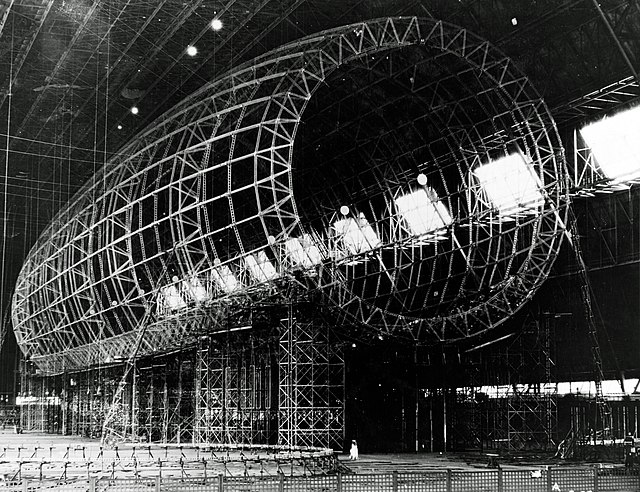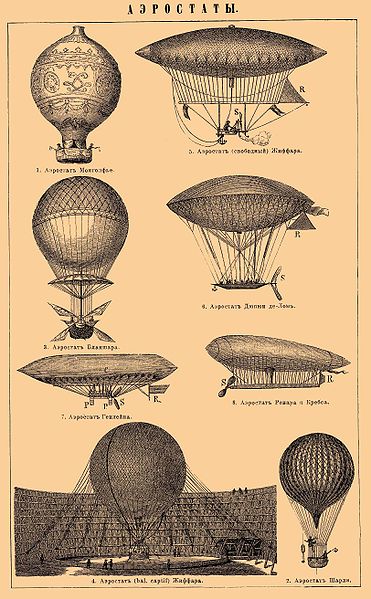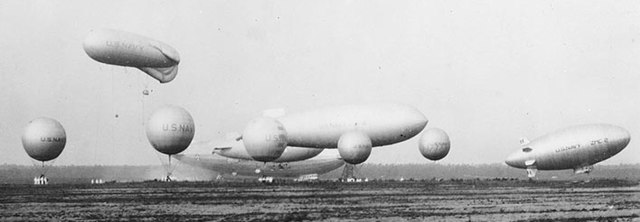USS Akron (ZRS-4) was a helium-filled rigid airship of the U.S. Navy, the lead ship of her class, which operated between September 1931 and April 1933. It was the world's first purpose-built flying aircraft carrier, carrying F9C Sparrowhawk fighter planes, which could be launched and recovered while it was in flight. With an overall length of 785 ft (239 m), Akron and her sister ship Macon were among the largest flying objects ever built. Although LZ 129 Hindenburg and LZ 130 Graf Zeppelin II were some 18 ft (5.5 m) longer and slightly more voluminous, the two German airships were filled with hydrogen, and so the two US Navy craft still hold the world record for the largest helium-filled airships.
USS Akron
Akron under construction in the Goodyear Airdock at Akron, Ohio in November 1930. Note the three-dimensional, deep rings.
Sample of the duralumin from which the frame of USS Akron was built
The maiden voyage of Akron on 2 November 1931, showing her four starboard propellers. The engines' water reclaiming devices appear as white strips above each propeller. The emergency rear control cabin is visible in the lower fin.
An airship or dirigible balloon is a type of aerostat or lighter-than-air aircraft that can navigate through the air under its own power. Aerostats gain their lift from a lifting gas that is less dense than the surrounding air.
A modern airship, Zeppelin NT D-LZZF in 2010
Dirigible airships compared with related aerostats, from a turn-of-the-20th-century encyclopedia
U.S. Navy airships and balloons, 1931: in the background, ZR-3, in front of it, (l to r) J-3 or 4, K-1, ZMC-2, in front of them, "Caquot" observation balloon, and in foreground free balloons used for training
The air-filled red balloon acts as a simple ballonet inside the outer balloon, which is filled with lifting gas.








